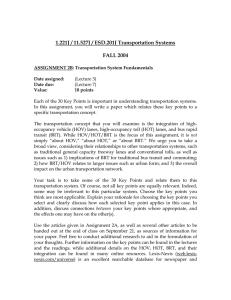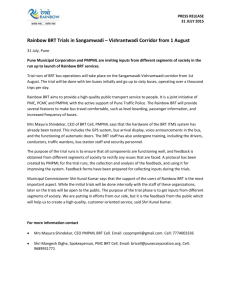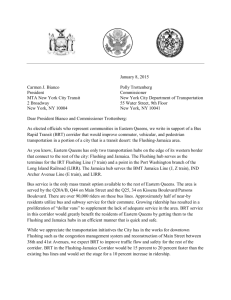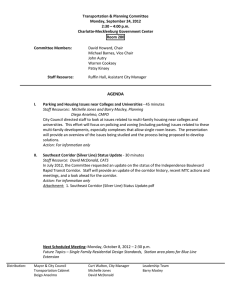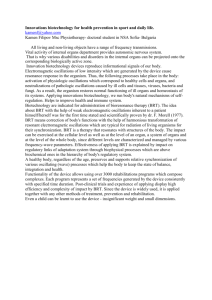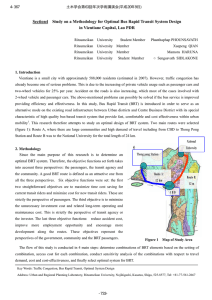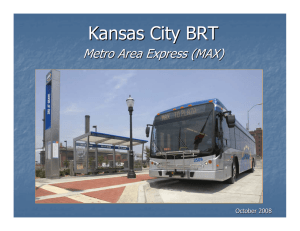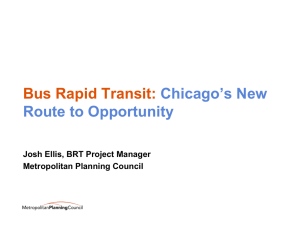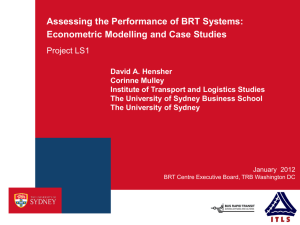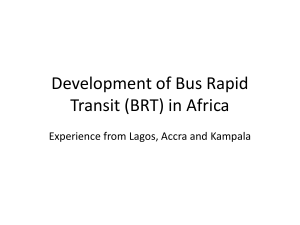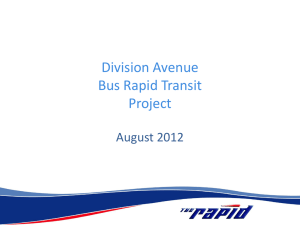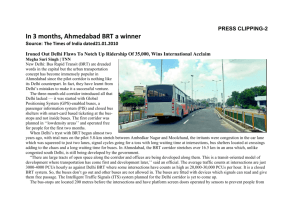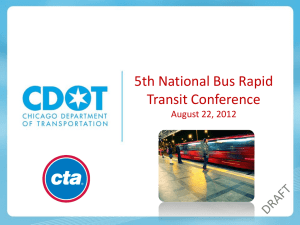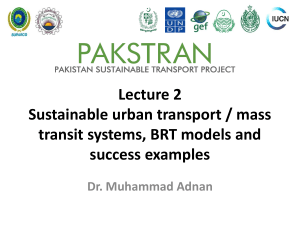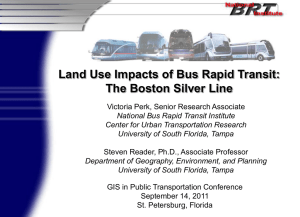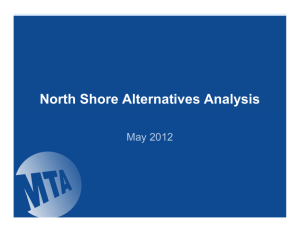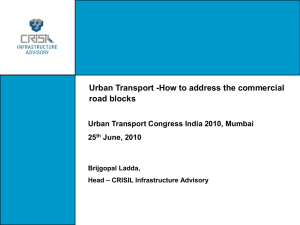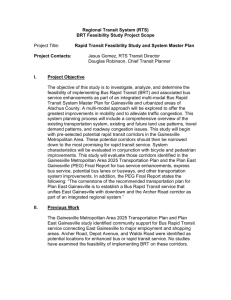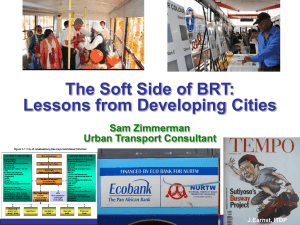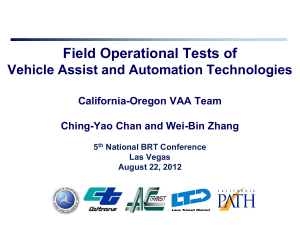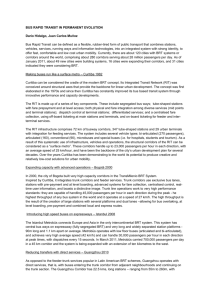Discussion State Road 50 Connector Alternatives Analysis
advertisement
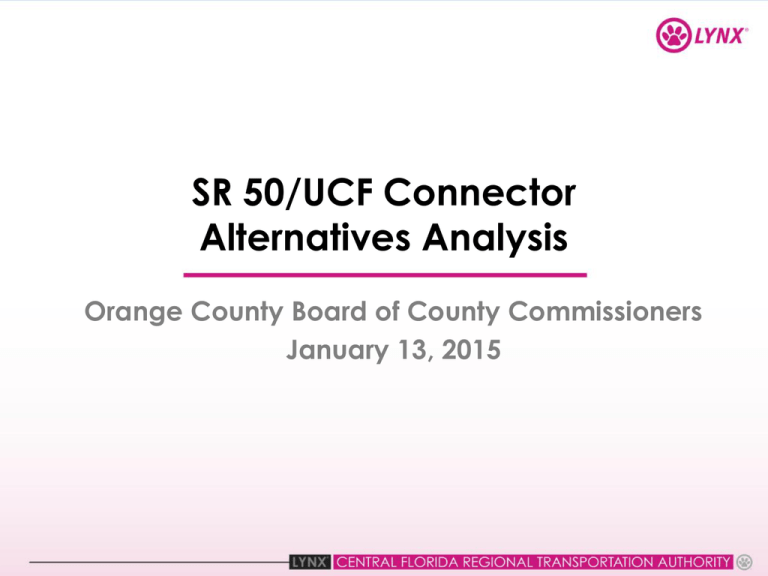
SR 50/UCF Connector Alternatives Analysis Orange County Board of County Commissioners January 13, 2015 Purpose and History of Study Alternatives Analysis Study funded by Federal Transit Administration (FTA) Study Area:1 mile of SR 50 between the Lake County line and SR 434, and along SR 434/Alafaya Trail to UCF Corridor a key regional transportation link One of the highest ridership corridors in the system Major east-west feeder for SunRail 2 Recommended Mode- Bus Rapid Transit Cleveland Health Line Cleveland Health Line 3 Swift BRT, Seattle Grand Rapids Silver Line SR 50 Bus Rapid Transit Characteristics Quicker boarding through all doors Bike racks on buses Free wi-fi Enhanced stations with shelters, seating and branding Modern buses Transit signal priority and queue jumps Off-board ticketing Buses operate in mixed traffic with 10 minute (peak) and 15 minute (off-peak) frequency Curb-level boarding Arrival and departure information 4 Performance of the Alternatives (Initial Operating Phase from Powers Drive to Goldenrod Road) 5 Recommended Alternative BRT Service from Oakland to UCF Initial Operating Phase (Phase 1) BRT in Mixed Traffic from Powers Drive to Goldenrod Road Express Bus Service between Downtown Area and UCF Area (Funded through existing mechanism) Phase 1 Express Bus (between Downtown & UCF Area) 6 Community Engagement Throughout the Process 343 Survey Respondents 16 Community Events 97% Supports Recommended Alternative Transit Investment 28 Stakeholder Interviews 3 Public Workshops/Open Houses 7 Project Advisory Working Group Meetings 2 Community Liaisons Meeting 9 Neighborhood Meetings Multiple Agency Coordination Meetings 7 Why Invest in SR 50 BRT? 8 SR 50 BRT is a Cost-Effective Investment Measures Frequency Capital Cost Annual Operating Cost (FY 2014$) Corridor Ridership (Typical Weekday) Existing (2010) Future No-Build1 Future BRT Alternative1 15 Min. Peak/ 30 Min Off Peak 15 Min. Peak/ 30 Min. Off Peak 10 Min. Peak/ 15 Min. Off Peak $0.8M $36M $9.8M $10.6M (+$0.8M2) $11.8M (+$2 M2) 8,500 13,700 14,3003 1Operating costs for future scenarios include SR 50 BRT Initial Operating Phase and Local SR 50 Routes but does not include Express Bus between Downtown & UCF Area. 2 Compared to Existing Conditions Costs, (+$XX) = incremental difference 3 Based on conservative ridership estimates based on 2010 on-board survey data 9 SR 50 will improve Quality of Service for Existing Transit Riders Average Travel Time Savings Compared to Base Year (2010) Per Weekday Trip 7 minutes Per Peak Trip 6 minutes Per Off-Peak Trip 7 minutes 10 SR 50 BRT will Serve Jobs Leaving Corridor to Work Commuting into Corridor to Work 56,796 117,539 12,832 Live & Work in Corridor 187,200 Working Population (workers who live, who live & work, and who commute into the corridor to work) 13% of Metro Orlando Jobs 9% of Metro Orlando Population Of approximately 130,000 jobs on the corridor, less than 10% are filled by corridor residents Source: US Census Longitudinal Employer Household Dynamics, 2010 11 SR 50 BRT will be a Key Feeder for SunRail Investment in SR 50 Increases Access to SunRail Jobs by 150% 12 SR 50 BRT will Support Economic Development 13 Station Areas (in Phase 1) to anchor Future TODs $2.8B in Public & Private Investment $2.3B Proposed Development 13 SR 50 BRT will Connect to Jobs and Education • • • • 100,000 Higher Education Students 7th Largest Research Park (10,000 Jobs) Provides Desired Transportation Choices for Millennials Of SR 50 Transit Riders, 48% are Transit-dependent 14 Next Steps Presentation to LYNX and MetroPlan Orlando Boards for Approval and Adoption of the Locally Preferred Alternative 15
